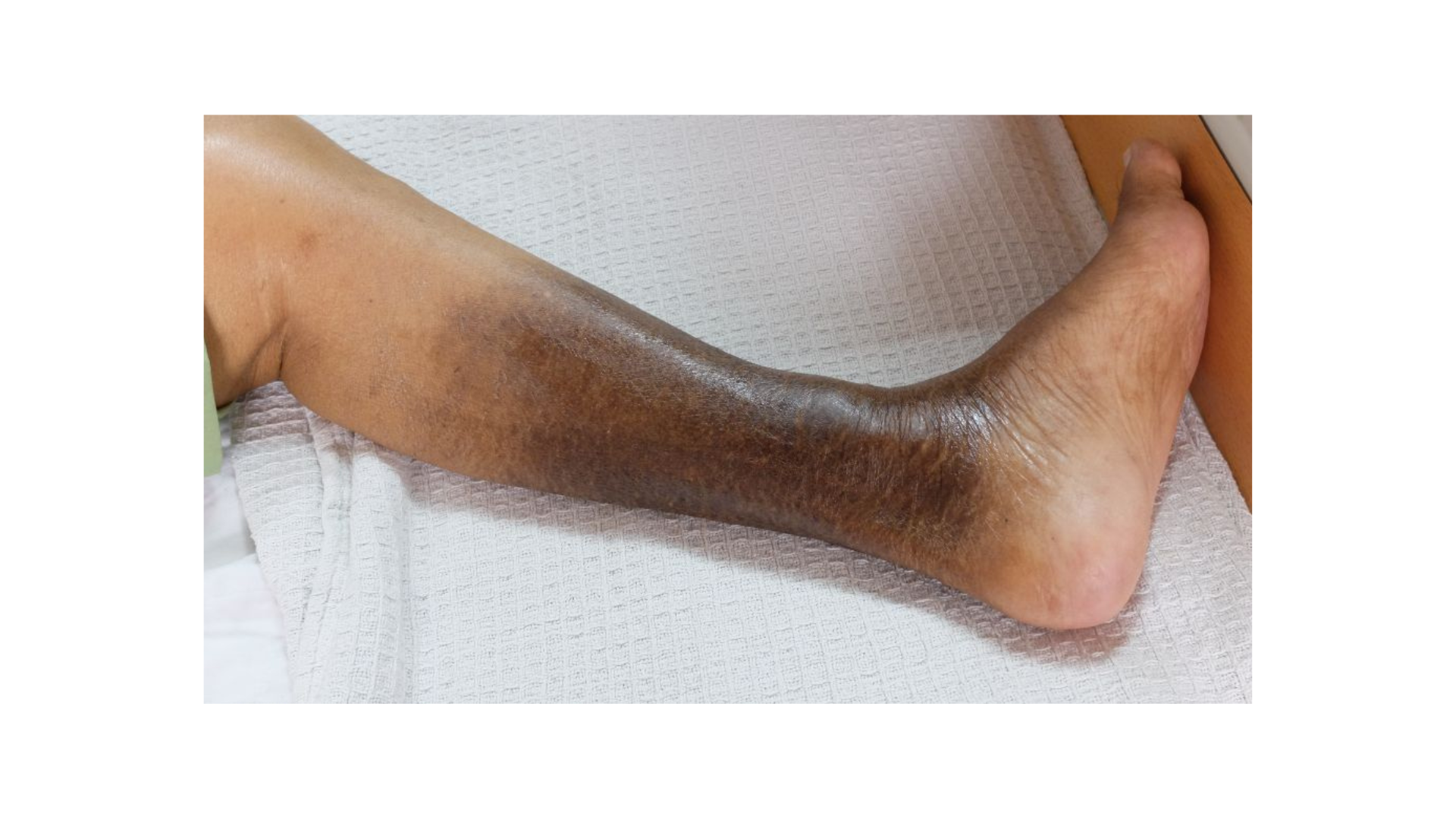Examining the Role of AI in Wound Care Workflow
January 30, 2024
Editor's Note: In this interview, Paul J. Kim, DPM, MS, FACFAS discusses how health care technologies that use artificial intelligence could enhance wound care practice workflow.
1. How could artificial intelligence (AI) contribute to optimizing the workflow in wound care practice management, from patient intake to treatment planning and follow-up?
Efficiency is the cornerstone of treating patients effectively and economically. Optimizing the treatment visit and care coordination are critical components of a medical practice. I was in practice when paper charts were still in existence. The transition to electronic medical records (EMR) was difficult. However, the ability to readily access patient information through EMRs have profoundly changed how patient information is collected, shared, and accessed. However, there has been a deleterious impact as well.
The interaction between the clinician and patient during a clinic visit now involves a third member, the computer terminal. The intimate and personal relationship between the clinician and patient has been altered. The patient looks at the clinician, the clinician looks at the computer screen with occasional glances at the patient. Proper and accurate documentation is absolutely necessary for not only providing good care for the patient, but also for billing, record-keeping, and for medico-legal purposes. I acknowledge that there are many other factors, not just the computer terminal, that have led to a deviation of the clinician-patient relationship. However, I do believe that the computer terminal has become a significant barrier.
AI can bring us back full circle to a more intimate face-to-face encounter. One example is the use of ambient conversation capture. This technology already exists but is not widely utilized. This AI driven technology can appropriately document the visit by “listening” to the conversation between the patient and clinician and place the applicable discussion items, history, and physical findings into the electronic medical record (EMR). Thus, more time can be spent directly taking care of the patient. If prescriptions or referrals are needed, these can be automatically generated. This technology is just the tip of the iceberg with potential application of AI in practice efficiency, such as:
- Slot utilization for optimizing scheduling for more complex patients
- Automatic supply ordering
- Precertification for procedures
- Appropriate billing practices
All aspects of the patient and clinician visit experience will be impacted. The key future development of AI in medicine and surgery must always focus on drawing closer the clinician-patient relationship.
2. How might machine learning (ML) algorithms assist in tailoring wound care treatment plans based on individual patient characteristics?
One of the 3 pillars of evidence-based medicine is accessing and understanding the best available evidence. All clinicians should be good consumers of the medical literature. This review is often challenging due to the daily demands of a clinical practice as well as the ever-changing body of published data. Someone without a research or academic background may have difficulty interpreting the often competing body of literature, an aspect especially true in wound care.
The dynamic nature of wound care, with its diverse number of approaches including the use of topical agents, biologics, devices, and diagnostics make it very difficult to cull through the published data. The published data may have significant flaws in design and interpretation. Thus, finding “truth” may be difficult or impossible for the clinician. Further, regional, economic, gender, and race differences impact the outcome of many studies. Study populations may not accurately reflect those in someone’s practice.
AI can summarize and determine the reliability and applicability of published evidence and apply its finding specifically to a single individual patient. Thus, a realistic risk assessment and healing probability can be calculated. This evaluation of evidence along with other data points derived from the patient’s EMR can create a truly patient-centric treatment plan. AI driven algorythms and programs already exist that have the capacity to dive into the peer-reviewed literature and other online sources that can harvest information vital to the clinician and make treatment recommendations.
3. How could AI contribute to the integration and analysis of diverse data sources relevant to wound care, such as patient records, imaging data, and environmental factors?
Although we have a lot of information from current methods of data extraction, it is often difficult to synthesize all available data for a patient. For example, we may have access to imaging, lab results, culture results, vascular testing, and other provider notes, etc. However, these data points are dynamic and ever changing. Given the time constraints inherent in a busy wound practice, there may not be enough time to seek out all available information. Most providers will attempt to extract what they feel is the most pertinent information which introduces a great deal of bias towards a diagnosis or treatment plan.
How Much Do You Know About Practice Management? Take our quiz to find out! Click here.
AI may be able to cull through available data and provide vital pieces of information to the provider. It could also detect missed data points that the provider may not have considered. These data points include aspects like social determinants of health which often impact the patient’s ability to access care and resources needed for treatment.
AI could reach out beyond EMR into public/semi-private information in order to better understand a patient’s individual life circumstances. Clearly, there are privacy issues and other regulatory concerns that need to be addressed before this can happen fully. However, considering how personal data is mined for predicting consumer behavior, perhaps this is one area that can be of benefit to the field of health care.
4. Are there technologies that leverage AI to remotely monitor and assess wound progress, allowing for more proactive interventions?
Remote monitoring has always been of great interest to wound care providers and certainly there is a need to decrease the burden for both patients and clinicians. The concept of identifying key moments in the life of a wound that could potentially prevent surgery or hospitalization would be of great benefit. Remote detection of changes in wound dimension, tissue quality, infection identification, pressure distribution, etc. could potentially change the trajectory of wound healing. Remote monitoring gained greater recognition during the COVID-19 pandemic where patients had limited access to clinics and hospitals.
In short, yes, AI does have a place in remote wound monitoring by collecting and assessing the importance of the data (eg, trends or aberrant readings), providing an alert to the provider of these changes, and then making a recommendation. However, there are significant challenges to remote monitoring that needs to be overcome before widespread adoption. For example, we learned that many older patients had limited technological capability or access to reliable internet or phone services. Further, wound care involves all 5 senses. There is no substitute of actually having a patient in front of a clinician. There is no substitute for the nuances of touch, color, temperature, and odor. Currently, remote monitoring devices have their limitations but may play a role in early detection for more urgent visits with the assistance of AI.
Concluding Comments
In my experience, treating patients is a complex orchestration of applying available information from the medical record and patient history/physical exam, understanding the published data, and experience. After 20 years of practice at teaching/academic institutions, the biggest challenge is to convey experience to a newer clinician. In other words, experience or intuition cannot be taught, it is learned over time. On one hand, AI could potentially substitute for this lack of experience early on until experience is gained over time. On the other hand, AI could assist and challenge clinicians with experience who may not be practicing at an optimal level. Experienced clinicians tend to follow a routine involving the same pathway of assessment and treatment, even though there approach may not be the most optimal. AI may challenge established notions of what clinicians routinely do.
AI already has the capacity to perform all the tasks listed above, and a small number of institutions are already leveraging the capability of AI. In my opinion and experience, as AI continues to evolve, adoption may be wide-spread and the most profound and disruptive change in medicine and surgery will occur—far surpassing the impact of the germ theory, antibiotics, vaccines, drug development, anesthesia, gene therapy, advanced imaging, and modern surgical techniques. This is not in the distant future, this is happening now.
About Dr. Paul Kim
Paul J. Kim is the Medical Director of the Wound Program at University of Texas Southwestern, Dallas, Texas. He has the rank of Professor in the Departments of Plastic Surgery and Orthopedic Surgery. He is also a Fellow of the American College of Foot and Ankle Surgeons. Dr. Kim received his Bachelor of Arts degree, Magna Cum Laude, in Psychology and Biology from the University of Colorado at Boulder in 1995 and his Doctor of Podiatric Medicine degree from the Ohio College of Podiatric Medicine in 2002 with multiple honors. Dr. Kim completed a surgical foot and ankle residency program in 2005 from Inova Fairfax Hospital in Falls Church, Virginia. He also received a Master of Science Degree in Clinical Research Management from Arizona State University in 2012.
Dr. Kim has received both intramural and extramural research grants in the areas of wound care, Diabetic limb salvage, and tendon pathology. He has chaired multiple committees related to research and Evidence Based Medicine and the Diabetic limb for various national and international organizations. Dr. Kim is also a national and international speaker with over 300 invited lectures and has authored over 200 basic science, clinical manuscripts, and book chapters on various topics in foot and ankle medicine and surgery with a specific interest in the Diabetic Limb.
The views and opinions expressed in this blog are solely those of the author, and do not represent the views of WoundSource, HMP Global, its affiliates, or subsidiary companies.












Follow WoundSource
Tweets by WoundSource